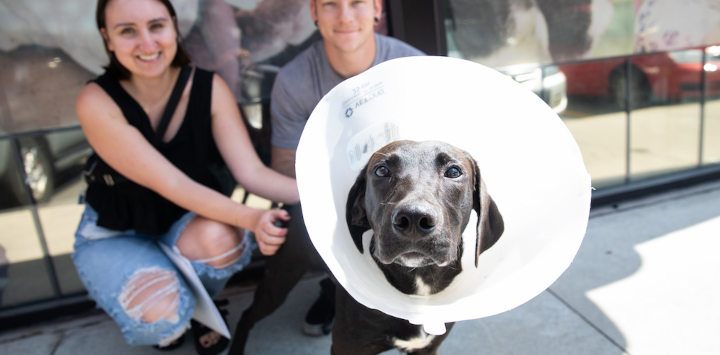
Experts weigh in on how to plan for the best adoption event ever
So far this year, the Best Friends Network partners have found homes for more than 25,000 dogs and cats through the National Adoptions Weekends held in July, August and September and participants have shared hundreds of great adoption stories and photos with us!
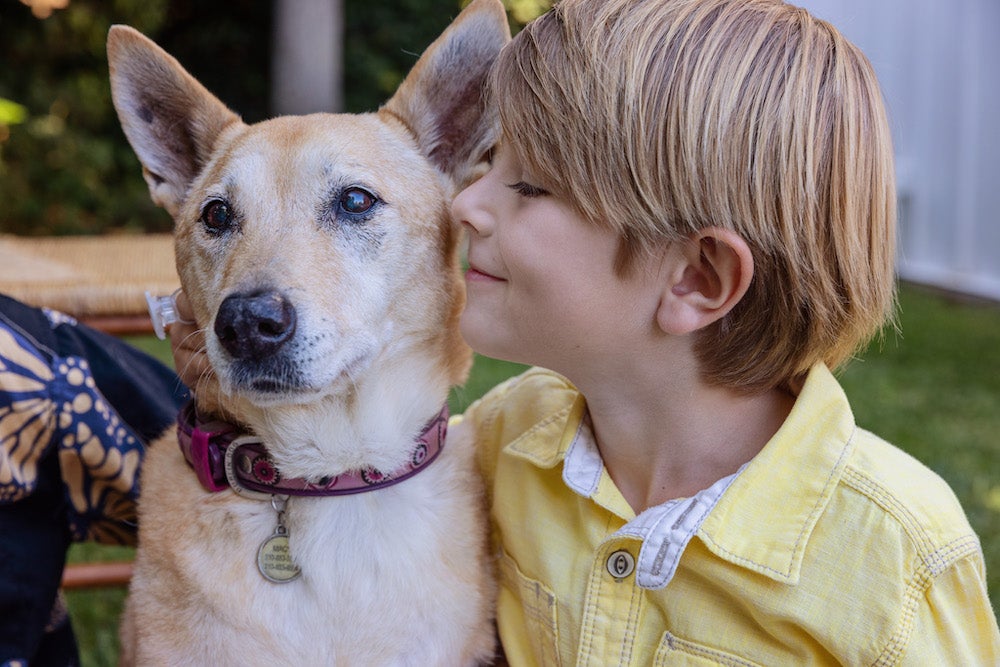 These events require a lot of support and planning, however, and we know it can be hard for some organizations to take part. That’s why we asked our partners if they had challenges around successfully pulling off these events, so that we could help them overcome such issues for the next National Adoption weekend.
These events require a lot of support and planning, however, and we know it can be hard for some organizations to take part. That’s why we asked our partners if they had challenges around successfully pulling off these events, so that we could help them overcome such issues for the next National Adoption weekend.
That’s right, the last such event of the year will be on December 9th to 11th! Partners will once again receive marketing support and adoption stipends for every dog or cat that finds a new home, making this an opportunity you don’t want to pass up!
As for those challenges? Participants in previous events felt that if they could just overcome a handful of concerns, they would be able to send more animals home with new families. From attracting enough volunteers to supplement limited staff to draw as many potential adopters as possible through successful marketing campaigns, these issues probably sound familiar.
We asked the experts at Best Friends to answer the six most frequent types of questions: event planning, community engagement, volunteers, marketing, placing hard-to-adopt animals and adoption processes. Here are their insights – advice that applies as much to our day-to-day work of as it does to those big events that we hope will clear the kennels of as many animals as possible in a short span of time.
Event planning
These events always seem to creep up on us – how can we plan for them in advance so we are not caught off guard?
 In general, the experts we consulted stressed that once organizations commit to an event, they must set and mark key milestone dates ahead of time on calendars and assign tasks to either staff or volunteers. If you don’t already have processes in place around those tasks, craft those now.
In general, the experts we consulted stressed that once organizations commit to an event, they must set and mark key milestone dates ahead of time on calendars and assign tasks to either staff or volunteers. If you don’t already have processes in place around those tasks, craft those now.
“Organizations should have standard operating procedures (SOPs) for all kinds of special events,” says Terran Tull, KPA-CTP, member of the shelter embed team. She is currently serving as manager of operations at Merced County, California, Sheriff's Animal Services Bureau. “That way you just have to follow your checklist on what to do when such an opportunity pops up.”
When she was executive director of Almost Home Humane Society in Indiana, Stacy Rogers (who is now regional director for the Midwest and Great Plains region) used the following steps to prepare for big events:
- Make sure all hands are on deck (if possible) and assign each team member to a specific job: adoption counseling, traffic control, adoption help in the kennels, spot cleaning, etc.
- Determine how many people you can assist at one time in the building and assign someone to control traffic
- Organize the building so that interested adopters come in one door and leave out another
- Process adoptions on paper and catch up on computer data entry after the event is over
Community engagement
We need help with engaging our community year-round so they will support us when we have our special events.
Keep up a regular stream of communication with the public about your organization, your needs and the specific animals in your care. Be explicit about how people can help and be flexible to take advantage of individual skillsets when members of the community do offer to assist.
“Do they have the ability to only help with events?” Terran asks. “That might attract someone in who is uncomfortable coming in for animal care or other shelter-based tasks.”
As far as social media, concentrate on the positive.
 “We've been working on sharing happy stories instead of only asking for help or panicking about being at capacity,” Terran says. “These posts have gotten more attention and grown our reach within the community.
“We've been working on sharing happy stories instead of only asking for help or panicking about being at capacity,” Terran says. “These posts have gotten more attention and grown our reach within the community.
“We also asked staff members or friends to share the information on local pet pages,” she adds. “For example, we have some local-centric Facebook pages like ‘Rehoming Animals in Merced’ and ‘Dog Lovers in Merced County’ to get the message out to a larger audience.”
Makena Yarbrough, senior director of lifesaving programs for the East region, suggests finding a local sponsor for an adoption banner, then take photos of every adopter (and hopefully their new family member) in front of it. By posting it on social media, the business gets exposure.
“Everyone loves to see who adopts and it can also create a ‘get-on-the-bandwagon’ feeling when people see who is adopting,” she says.
"Collaborate with local businesses to co-host events drawing traffic to their place of business and your adoptable animals, says Bethany Heins, director of strategy and network operations for the network. The reverse works also, through food trucks, live music and kids’ activities that take place at your organization during the adoption event.”
Volunteers
We need to grow our volunteers because we struggle to support special events with our limited number of staff. How can we attract and keep more people who will be able to help us with these events, either on site or at off-site locations?
First and foremost, make sure it's easy to volunteer, says Audrey Lodato, senior strategist for the East region.
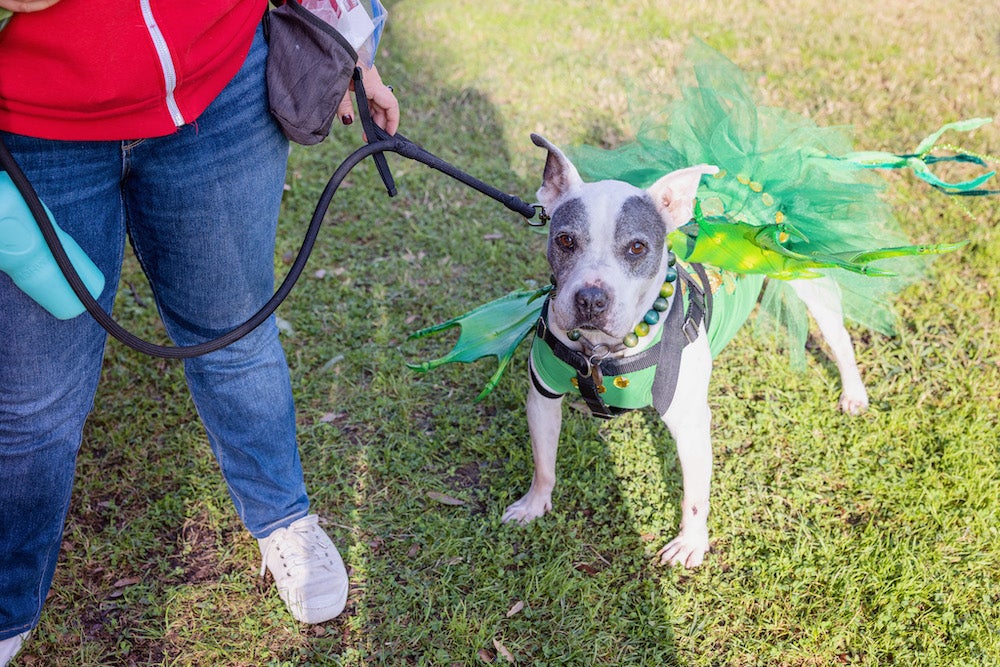 “How long does it take to be onboarded? Is there a lengthy process for orientation? Are there lots of hoops to be ‘certified’ to volunteer?” Audrey asks. “Get rid of as many barriers as you can, communicate with your volunteers and let them know how you need help.”
“How long does it take to be onboarded? Is there a lengthy process for orientation? Are there lots of hoops to be ‘certified’ to volunteer?” Audrey asks. “Get rid of as many barriers as you can, communicate with your volunteers and let them know how you need help.”
Leadership should regularly ask volunteers for feedback as well.
“If you're having a hard time getting people to volunteer for events, ask your volunteers why they don't volunteer for events,” says Audrey. “It sounds simple, but it will give you good information.”
Do you have any connections with local rescues? Maybe their volunteers would be up for coming in and helping you - especially if they normally pull lots of animals from your shelters. This would help alleviate some of the animals that they might end up pulling!
Even if they haven't volunteered with you before, they can still be helpful! Have them pass out applications, chat with people in line to keep them content and occupied, pass out waters, scoop poop between meet and greets, etc.
Bethany advises groups to explore if there are any businesses in the community that participate in corporate volunteer programs.
“These tend to help with finding volunteers who can support you during regular activities,” she says. “You can also activate group volunteers to help with specific events such as local Scouts organizations.”
“If organizations aren’t self-promoting, doing public relations and community events, or creating a welcoming environment with real, purposeful jobs for volunteers, they won’t get them,” says Makena. “Their attitude needs to be checked around people.”
You can find loads more information about how to make your volunteer program the best it can be here.
Marketing
What are some successful ways to market these events to the public? Are there other ideas in addition to FB posts and putting it on our website?
First, use templates to communicate with any media. Every organization that signs up for these events will receive specially designed templates to communicate with the public and local media.
“They are designed so that you can swap out images, add logos and even add copy telling folks a little bit more about the specific pet you are featuring,” Bethany says.
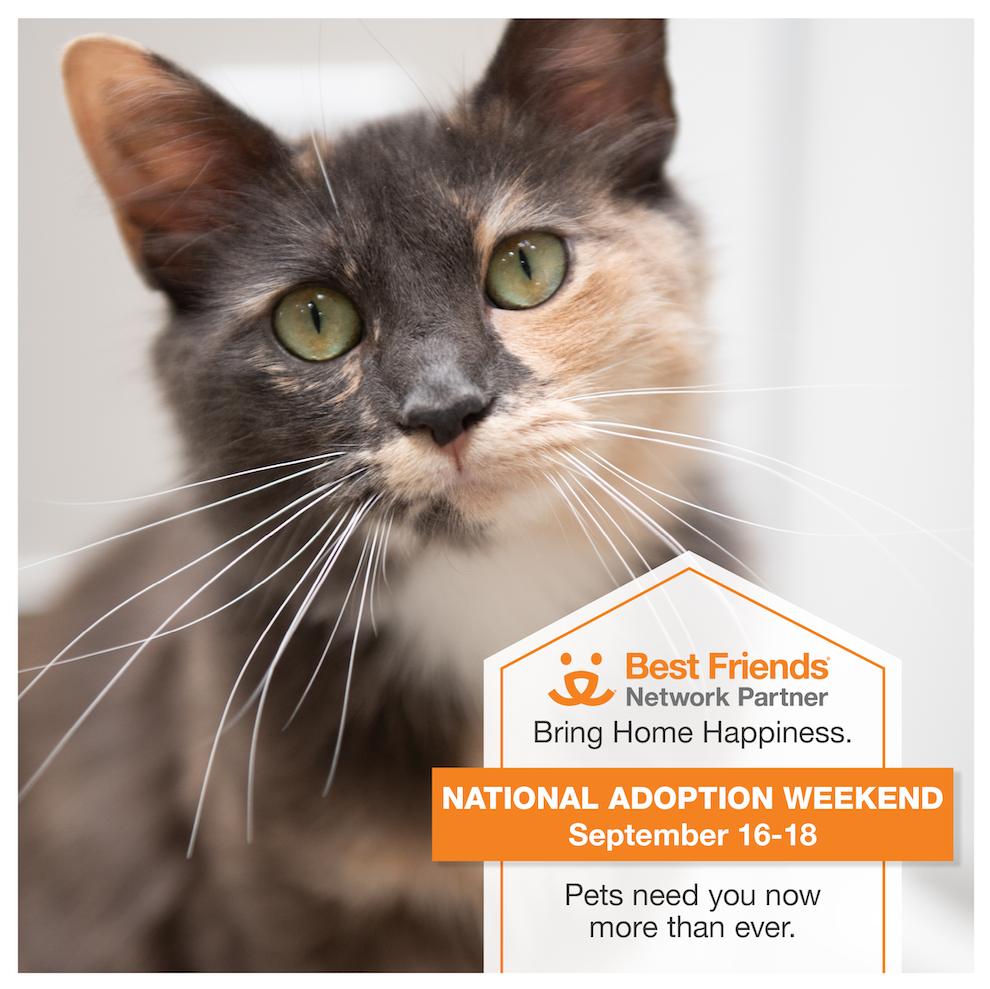 | 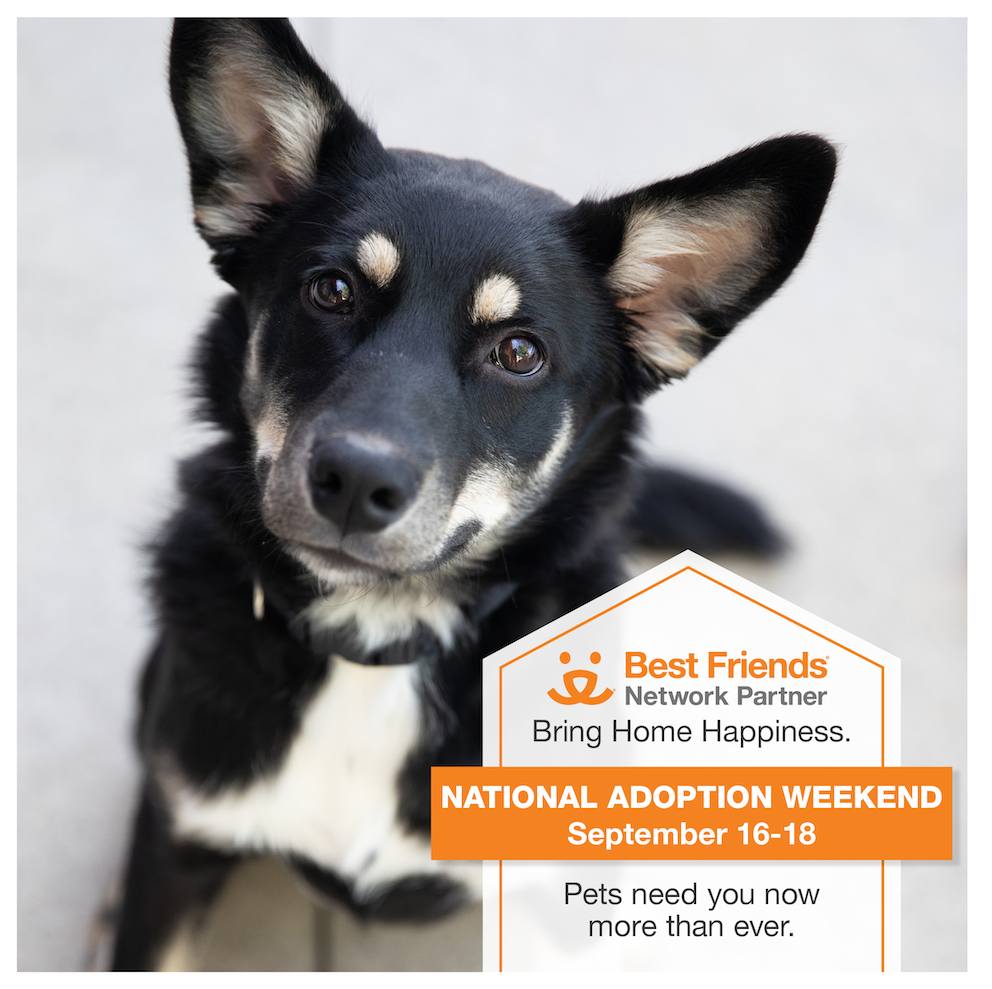 |
You can also find more marketing resources here
Terran says Merced printed flyers from the toolkit shared out once the shelter signed up for the event as well as some she made on the free online tool Canva.
“Merced County passes flyers out at local businesses and has the best success with coffee shops, small locally owned family restaurants, pizza shops, the library and a variety of stores that were located on the main street, which get lots of foot traffic,” Terran says.
Lynchburg also had success by putting flyers on pizza boxes, and Makena notes that Domino’s typically will allow organizations to do that.
Angela Rovetto, senior strategist for the Mid-Atlantic region, also suggests organizations identify the places where and how people learn information in your community.
“Think about it from a wider context, outside the context of adoptions or volunteers,” she says. “Is it TV news on cable (not streaming?) Is it a local print paper? Are there colleges or universities? Especially for rural areas, places of worship have been mentioned as some of the best places to connect with the general public.”
In terms of major media, Makena suggests sending out press releases at least a week but preferably two weeks in advance of the event. The partner toolkits for the Adoption Weekend also include press release templates in both Spanish and English. All participants have to do is drop in their logos and organizational info – easy peasy!
“That will hopefully attract TV and radio attention,” she says. “Lots of morning radio shows loves to have local events featured. If your budget allows for it, paying for radio ads helps, too. And of course send out email blast to any and everyone who has touched your organization.”
Placing hard-to-adopt animals
Our kennels have quite a few “long-timers” who have been here for over a year. Many are large dogs and quite a few have behavior issues that make it challenging to find the right home. Even with behavior assistance, there is less enthusiasm to adopt these animals. Likewise, we get a lot of seniors and medically needy cats. What are some creative ways we can focus on these residents at our facility?
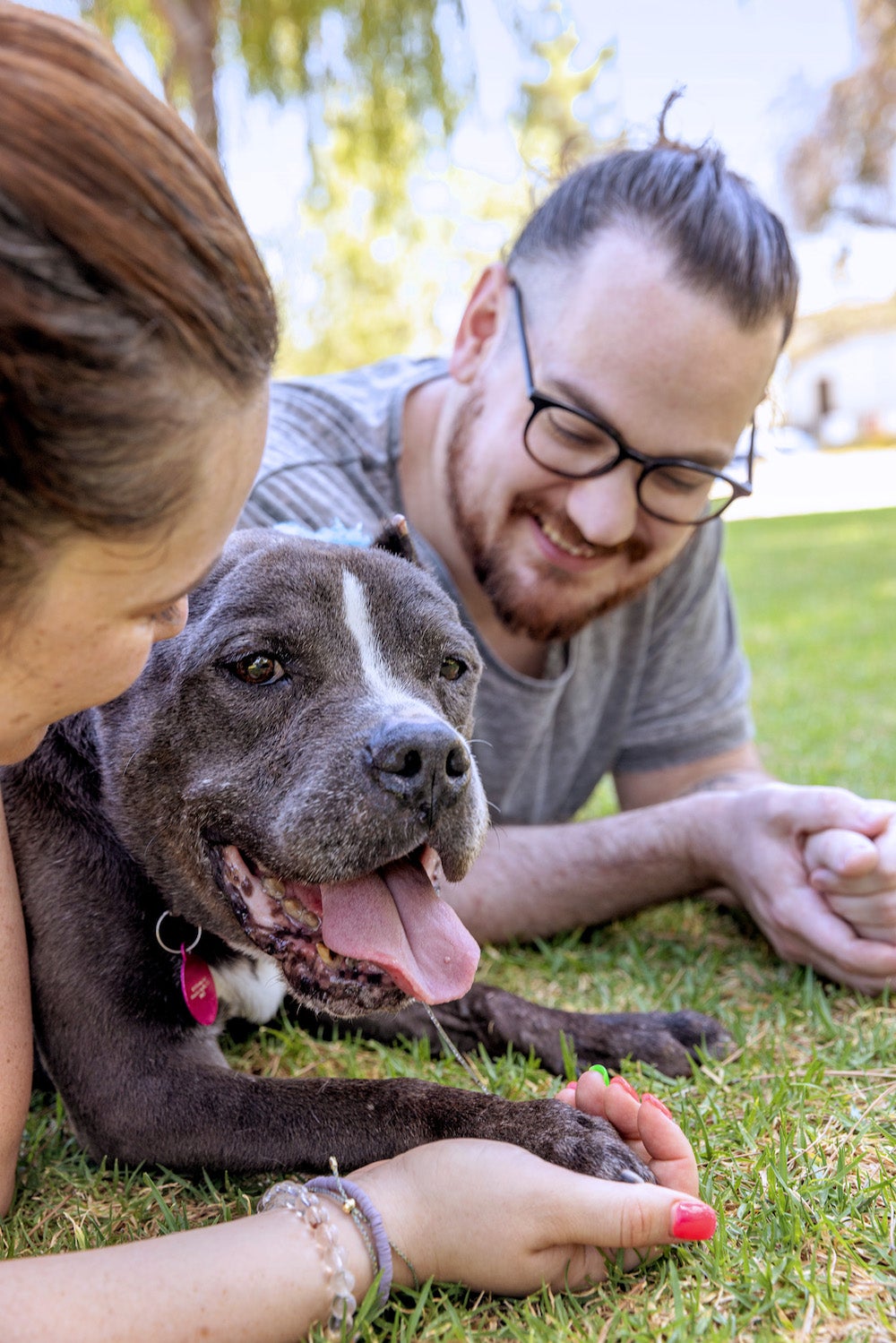 Audrey’s advice is to do a clever campaign ahead of the event around the pet(s) in question.
Audrey’s advice is to do a clever campaign ahead of the event around the pet(s) in question.
“Have them on the news, the radio, or on social media posts,” she says. “And give them a role, like the "host" of the event, or the emcee.”
Try to talk about such animals without focusing on their challenges, too. Highlight their good characteristics and make sure that you have a way to help them transition to a home and support in place for when they get there.
“Even if they have challenges, make sure those animals can be adopted at the event,” she says. “Remove barriers in the process and have all the information ready about their medical or behavioral needs. If they need medicine or special gear, bring that with you. If you think the adopters might want to talk to medical or behavior staff, have those folks ready on site or via phone.”
Terran suggests having your vet, medical team or contracted vet do a short write-up about what any necessary medical care will entail so that adopters have something to review before they have taken the dog or cat home.
As far as advertising them during the event, she suggests showing a video or placing a graphic poster in the lobby with cute photos and “lots of lots of lovely things to say about the special animals you are trying to place.
“Then have a volunteer or staff member bring some of these pets out into the lobby or to visit people waiting in line,” she says. “If that's not an option, do a Facebook Live with their foster parent or favorite staff member. That will let them show themself off in the best light so that families can imagine them being in their home, especially if they are nervous or reactive during meet-and-greets.”
For more tips on marketing your most challenging pets, review our town hall on the topic, our vlog about fostering and adopting special needs animals and our podcast on how The Grey Muzzle Organization is helping senior dogs.
Adoption processes
We would love some help with streamlining our adoption practices. They take so long that it’s hard to do many adoptions during these events. How can we speed up the process without sacrificing quality adoptions?
All of our experts stressed the importance of having conversations – in fact, many people are using that phrase instead of “open adoptions” to describe this approach to matching people and animals.
“Practice conversation-based adoption counseling and ditch the lengthy application,” says Audrey. “It's the fastest way to know if a home is a good fit.”
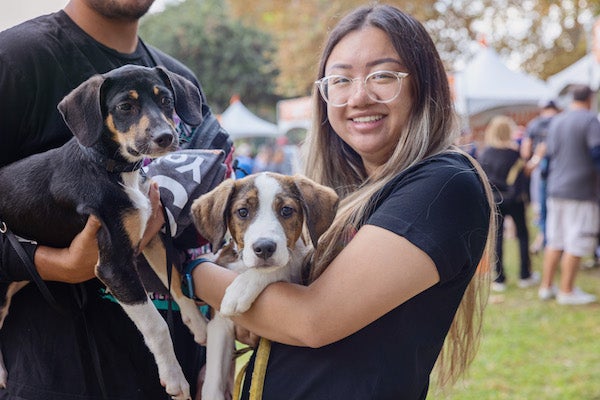 Since open adoptions can involve a whole new mindset, invest energy in changing your process well in advance of any event. In fact, you should be shifting to this model no matter where people are adopting. We have created many resources to help your organization make this cultural shift, including online courses, playbooks, podcasts and editorials.
Since open adoptions can involve a whole new mindset, invest energy in changing your process well in advance of any event. In fact, you should be shifting to this model no matter where people are adopting. We have created many resources to help your organization make this cultural shift, including online courses, playbooks, podcasts and editorials.
As far as streamlining things on the day of the event, Kaylee Hawkins, director of the Pacific region, discovered that breaking down the adoption process into related tasks and working in an assembly-line fashion really worked well for massive adoption events she coordinated with the Best Friends Los Angeles team (both offsite super adoptions and smaller in-house events).
“Think about what's vital versus what’s nice to have and see it through the lens of creating a client-forward experience,” she says. “For example, does the person doing the counseling/meet-and-greet also need to do the paperwork processing, or can you divide that task up into two separate roles that can be done concurrently? Do you need to have each possible adopter who wants to browse the kennels paired with a team member or can you assign greeter/client service people to float and help multiple people at once?
“Is every question in your counseling process 100% vital to setting the adopter up for success, or can you pare down those questions?” she continues. “Time is our most valuable resource in animal welfare, so how can you ensure you're using it to best benefit the animals in your care? Remember, people only retain a fraction of what you say during the adoption process, so focus on what is vital to those first hours together. Everything else can be done in post-follow up communications and/or supported by adoption materials to send home with the adopters.”
Leverage technology to streamline your processes, too. For instance, if you have Shelterluv, you can utilize the Mobile Checkout feature to speed up paperwork. Maintaining a wait list via Waitwhile allows possible adopters the flexibility to not have to sit in a crowded lobby if the anticipated wait is long.
“Instead, they can just come back when they receive a text!” Kaylee says. “Also, if there's information you find yourself repeating a ton, can you create a video to address commonly asked FAQs? What can you automate that doesn't impact quality time helping clients matchmake with a pet?”
Don’t forget to sign up for the December National Adoption Weekend! The event is open to all current network partners, so if you aren’t one currently you can sign up by November 21st and still participate. Registration deadline for the event is December 5th
If you enjoyed this program spotlight, you can find our complete catalog of spotlights here.

Liz Finch
Senior Writer
Best Friends Network